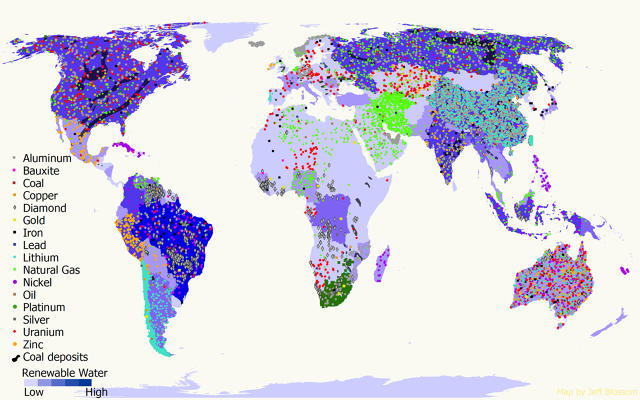7 Maps That Will Change How You Think About Global Politics
Power in the 21st century means something very different than it did even a few decades ago. Military might, territory, and physical borders often aren’t as important as trade partnerships, resources, and infrastructure. When you think about who will be the global superpower of the next 100 years, consider this: China has a paltry military compared to the U.S., yet it is the number one trade partner of twice as many countries.
“Our very logic, or metrics, of what constitutes power have changed,” says Parag Khanna, a senior research fellow in the Center on Asia and Globalization at the National University of Singapore. It’s not who rules this or that territory that rules the world, he says—it’s who rules the supply chain. “The most powerful players in the system are not those necessarily with the largest militaries, most nuclear weapons, or largest populations. It’s the ones that are the most connected,” says Khanna.

Khanna’s new book, Connectography: Mapping the Future of Global Civilization (see an excerpt here), lays out his theories by weaving history, anecdotes, and political and economic analysis. But best of all, it is full of fascinating maps that lay out this new reality, or Khanna’s vision of a “postmodern geopolitics”—one in which “geography is no longer destiny; connectivity is.” Look at the maps in the slideshow above and you can see some of the elements that make up his thesis.
Transportation, energy, and communication infrastructure are the three areas in which connectivity matters most, Khanna argues, and these facilitate the forces of migration and trade that are shaping today’s societies and superpowers. “Urbanization is the most powerful, organic, voluntary force in the world today,” he says. Consider that there are only 500,000 kilometers of international borders worldwide, but there are 64 million kilometers of roads, 4 million kilometers of railways, 2 million kilometers of pipelines, and 1 million kilometers of Internet cables.

His book comes at an interesting time, as right-wing politicians in the United States and much of Europe grow in popularity in reaction to the refugee crisis and the rise of new “stateless” powers—a group that includes both ISIS and the large corporations that are moving jobs away from Western nations in today’s globalized economy.
Khanna says their belief that they can stop these forces is hopelessly impractical—immigrants will come because there is a demand and globalization is now the mainstream reality, he says.
“What’s completely wrong is the view that we don’t all benefit directly from more integration and connectivity.” He faults the American political system for not adapting to take advantage of these forces by intensively retraining workers in new skills and giving incentives for companies to stay, like countries such as Singapore, Germany, and Switzerland have done. Instead, America has been mostly in denial.
“Where is America’s federal worker retraining program? Where is it? We don’t have one. Other countries do have it. That has nothing to do with whether globalization is good or bad,” Khanna says. He puts it in terms Trump can understand: “It has to do with whether you’re smart or stupid.”
You can hear more about his research in a recent TED talk, too.
All Images: Parag Khanna/Connectography
Does urbanization mean economic clout? The cities of the world compared by population density and GDP.
” src=”http://b.fastcompany.net/multisite_files/fastcompany/imagecache/slideshow_large/slideshow/2016/04/3059156-slide-s-2-cities-gdp-population-global.jpg”>
As we become more globalized, people more more easily. Africa, India, Mexico, the Philippines, and China are the largest source of migrants.
” src=”http://d.fastcompany.net/multisite_files/fastcompany/imagecache/slideshow_large/slideshow/2016/04/3059156-slide-s-4-migration-global-pattern.jpg”>
Multinational corporations are gaining power. This map shows how their supply chains connect the world–and how they are becoming more distributed.
” src=”http://c.fastcompany.net/multisite_files/fastcompany/imagecache/slideshow_large/slideshow/2016/04/3059156-slide-s-6-supply-chains.jpg”>
Fast Company , Read Full Story
(47)














